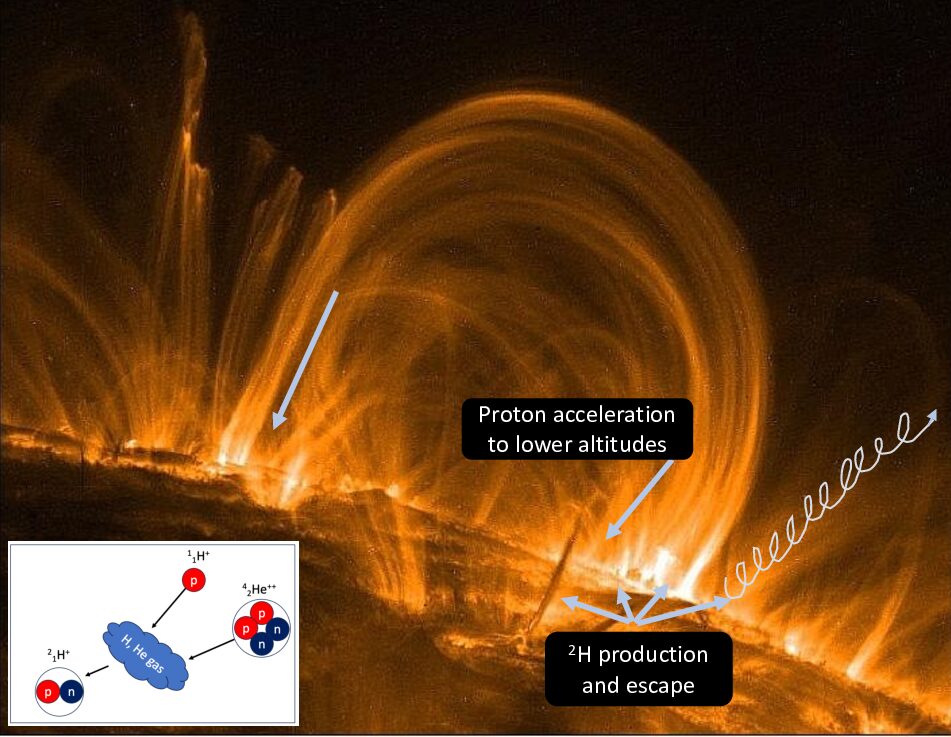Authors: G. D. Berland (JHU/APL), R. Leske (Caltech), R. L. McNutt, Jr. (JHU/APL), M.E. Hill (JHU/APL), D. G. Mitchell (JHU/APL), A. Kouloumvakos (JHU/APL), E. C. Roelof (JHU/APL), C. M. S. Cohen (Caltech), J. G. Mitchell (NASA/GSFC)
Solar-origin deuterium (2H) may be produced flares when protons are accelerated to 100s of MeV and then are backscattered into the solar atmosphere. These particles are produced via nuclear interactions and were originally investigated by Anglin, et al. in the 1970s by summing flare particle data using the IMP-5 and -6 satellites where deuterium count rates on par with the galactic cosmic ray deuterium component were found.
We report new detections by the Parker Solar Probe (PSP) Integrated Science Investigation of the Sun (ISOIS) instrument suite of solar-origin deuterium. These detections are impulsive in nature, and are time-correlated and magnetically connected to M-class flares or greater. ISOIS is comprised of the EPI-Lo and EPI-Hi instruments which are a time-of-flight by energy (TOF x E) mass spectrometer and a stopping power by total energy (dE vs. E) telescope, respectively. EPI-Lo and EPI-Hi coincidentally detected deuterium within 100 keV/nuc. – 5 MeV/nuc. at high significance above the background level. This work describes the background quantification that enabled the detections, the estimated deuterium energy spectra and fluxes, and describes the solar flare events in detail.


